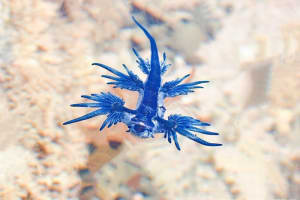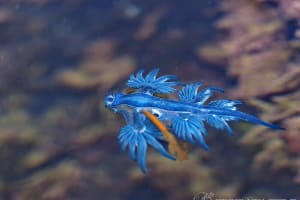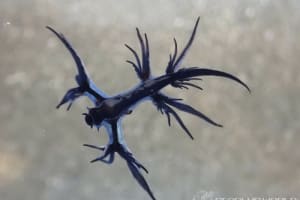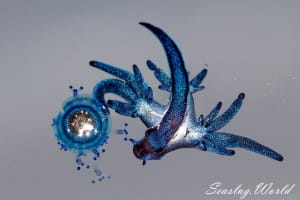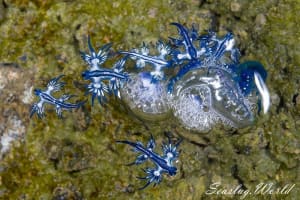MORPHOLOGY
Body slender and elongate, with up to three groups of cerata on each side. Head short and not distinctly separated from the body. Oral ten-tacles and rhinophores short and smooth. The first group of cerata is pedunculate, with a short stalk. The other two groups are sessile. All of them are perpendicular to the body mid-line. The cerata are inserted in each group in a single series, the most dorsal cerata in each group being the largest. The cerata decrease in size ventrally on each side. The cerata are conical, narrower near the tip, and easily autotomizable. The foot is broad and well developed. Its anterior corners are rounded. The posterior end of the body is very long and slender, and the foot extends to its tip. The anus lies between, and level with the top of the second and third groups of cerata. The renal pore is situated at the same level but a little distance in front of the second group of cerata. The general body color is silver, with the rhinophores, oral tentacles, and the lower edge of the cerata electric blue. The dorsum varies from dark blue to brown. The foot is silver in the central portion, flanked by bands of light blue that join together at the head and near the tip of the foot.
DISTRIBUTION
circumtropical
Remarks
Glaucus atlanticus is called Sea Swallow, Blue Angel, Blue (Sea) Dragon, etc.
References
- あをみのうみうし(新稱), 内田清之助ほか. (1927). 日本動物圖鑑
- アオミノウミウシ, 生物學御研究所編. (1949). 相模湾産後鰓類図譜.
- アオミノウミウシ, 中野 理枝. (2004). 本州のウミウシ.
- Glaucus atlanticus, Valdés A. & Campillo O.A. (2004) Systematics of pelagic aeolid nudibranchs of the family Glaucidae (Mollusca, Gastropoda). Bulletin of Marine Science 75(3): 381–389.
- アオミノウミウシ, 小野 篤司, 加藤 昌一. (2009). ウミウシ.
- Churchill C.K.C., Alejandrino, A. Valdés, Á. & Ó Foighil, D. (2013). Parallel changes in genital morphology delineate cryptic diversification of plamktonik nudibranchs. Proceedings of the Royal Society B 280: 20131224
- Glaucus atlanticus, Terrence Gosliner, Ángel Valdés and David Behrens. (2015). Nudibranch and Sea Slug Identification Indo-Pacific. New World Pubns Inc.
- アオミノウミウシ, 中野 理枝. (2018). 日本のウミウシ.

KIMOTO Nobuhiko
